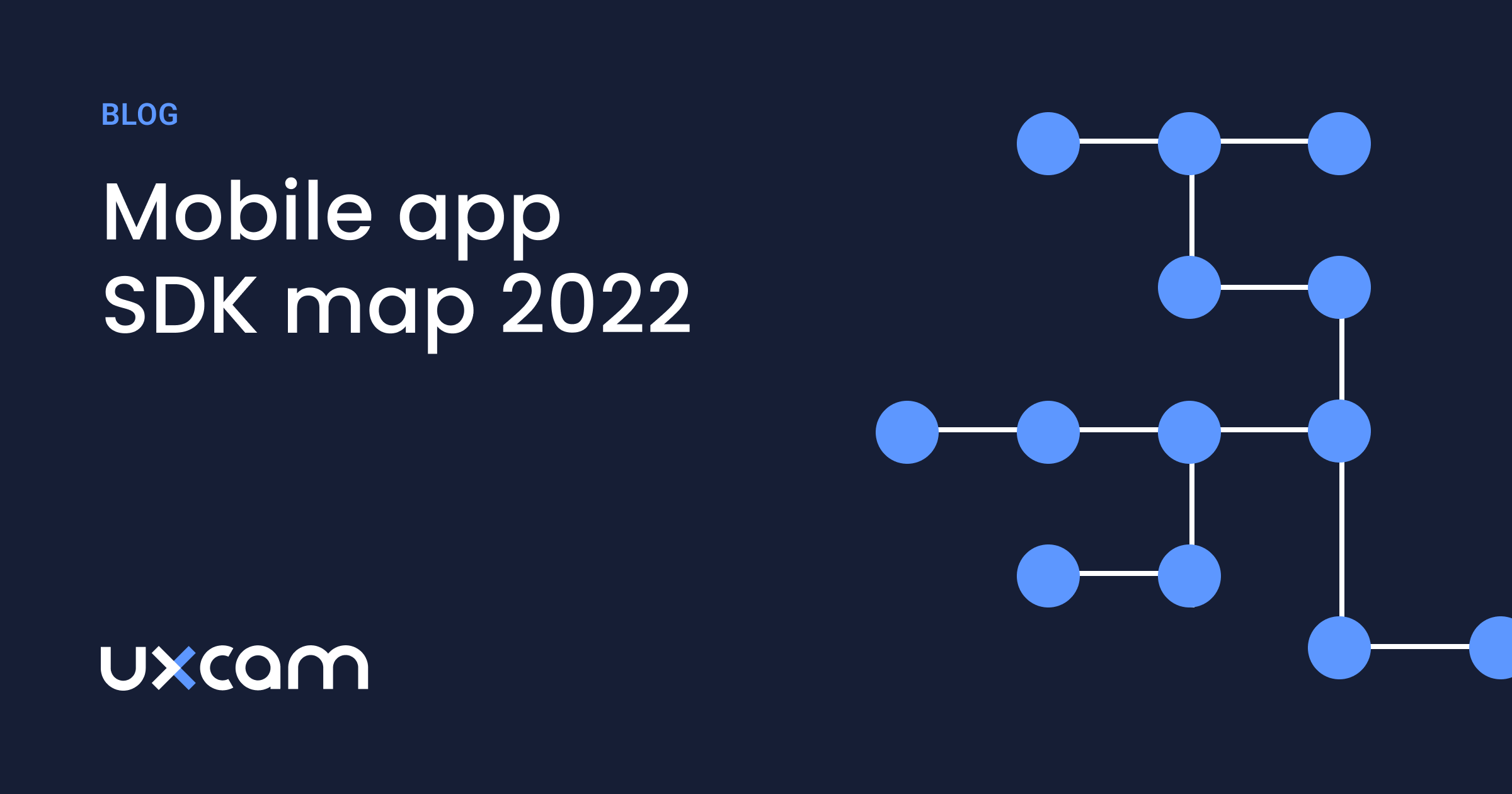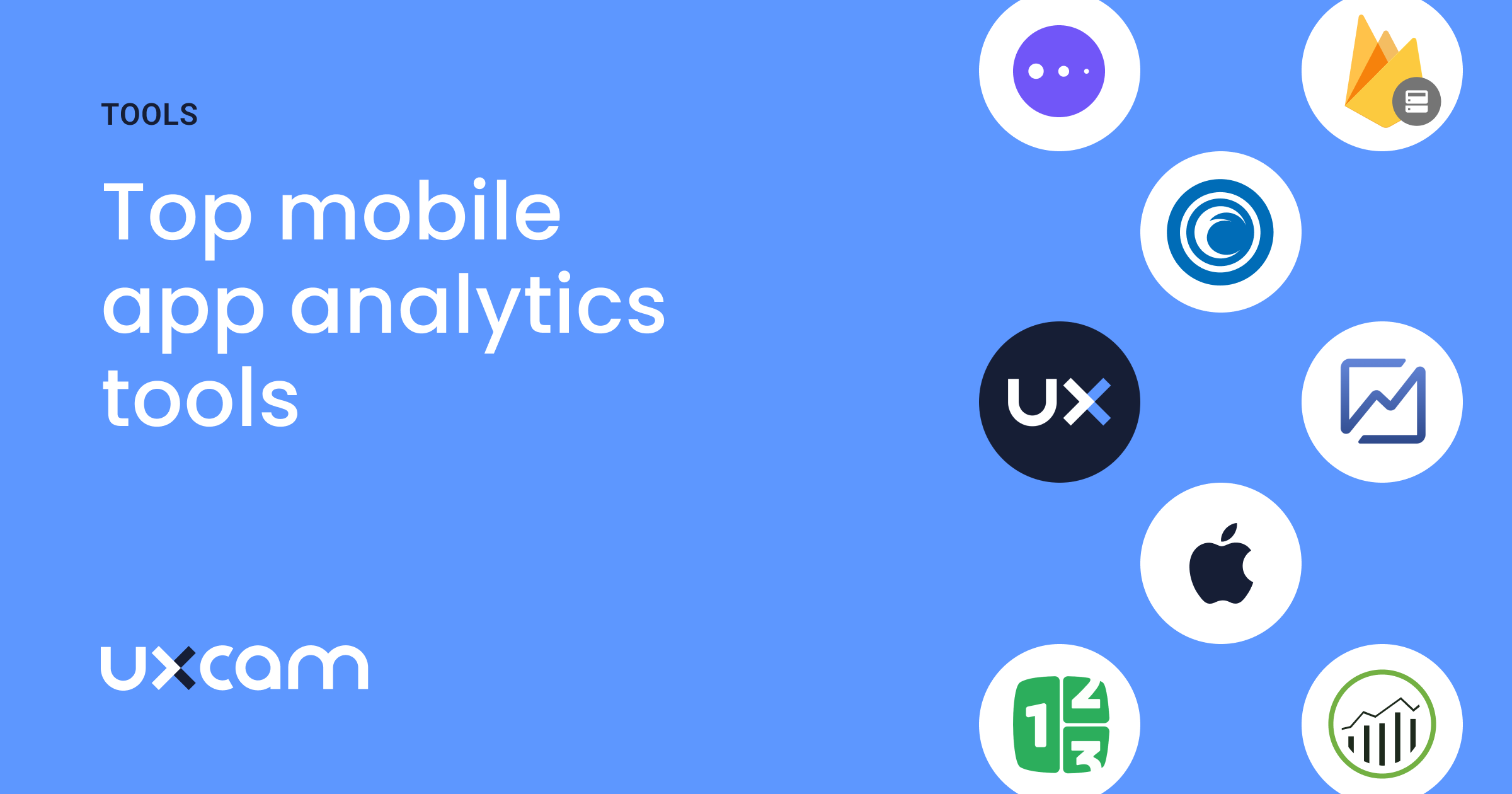How To Write a Tracking Plan for Mobile App Analytics
PUBLISHED
23 January, 2025

Growth Marketing Manager
The only reliable way to create apps people love is to collect data on their experiences and transform them into insights. But with so much data available, it’s important to have a clear plan in place.
Creating a tracking plan is the best way to organize your analytics strategy into a coherent, effective system. And in this guide, we’ll walk you through the exact steps you need to follow to create one.
Ready to systematize your analytic efforts? Let’s get started.
What is an analytics data tracking plan?
Your product’s tracking plan is a central document in your analytics strategy.
In fact, it is your analytics strategy—your full “roadmap” for data collection, analysis, and reporting in your mobile app. It contains the objectives, metrics, and KPIs you need to measure the success of your product, as well as detailed technical instructions for how you’ll track them (tools, processes, etc.).
The example below shows a tracking plan developed by AVO.
These are data tracking sheets that lists all the events and event properties their app tracks (organized into event categories). Each category is matched with KPIs, objectives, and notes about what data they are collecting and why.
Once developed, this plan gets circulated to anyone and everyone involved in the analytics process—from product managers and developers to marketers and business analysts. This ensures all analytics efforts are based on a unified strategy.
Why is a data tracking plan important in mobile app analytics?
1. Empowers developers to implement tracking consistently
A well-defined tracking plan lays out the exact events you want to capture—along with the naming conventions, parameters, and triggers.
When you have a clear set of rules, they’re less likely to introduce errors or create multiple versions of the same event. In mobile app analytics, different platforms (e.g iOS or Android) can easily cause inconsistencies if events aren’t labeled or triggered in the exact same way.
Let's break this down with a practical example
Suppose your team tracks an event whenever users tap the “Share” button in your social media app. If your iOS developer names the event "share_button_clicked_iOS" and your Android developer calls it "user_shared_button", you end up with two distinct events in your analytics platform. This duplicates data, makes it harder to spot trends, and ultimately confuses your team when analyzing user behavior.
With a clear tracking plan, such as always labeling this event as "share_button_click" and passing the parameter source: iOS or source: Android, every single “Share” action is collected under one consistent name. When you view the data, you get a single, accurate view of how users interact with that feature.
2. Provides quick access to the right information
A good tracking plan doesn’t just define what to track—it also outlines where that data will live and how it can be accessed by the broader team.
Product managers, marketers, and data analysts all rely on the same analytics data to make decisions. If they can’t easily find event definitions, parameter details, or funnel logic, they’ll waste time hunting for information or risk misinterpreting it.
When your tracking plan is centralized and well-documented, any team member can quickly look up the meaning of a specific event or metric—no gatekeepers required.
Let's drive this home with a practical example. Imagine you’ve got a new marketing lead who wants to launch a campaign to increase user engagement. They look at your analytics dashboard and see an event called "signup_initiated_v2". Without documentation, it’s unclear what “v2” means or which screen or user action triggers this event. A comprehensive tracking plan, often stored in a shared document or tool, clarifies that "signup_initiated_v2" is logged when a user presses “Get Started” on the welcome screen and that “v2” denotes the second iteration of the onboarding flow. Now, your marketing lead instantly knows the context behind that event and can interpret the data accurately.
3. Helps you make better product decisions
Ultimately, a tracking plan isn’t just about data cleanliness; it’s about tying analytics back to your larger product and business goals.
You can observe how metrics move in relation to your roadmap. Are you trying to reduce friction in the onboarding flow? Tracking plan data can show if your changes improve funnel completion rates.
You don’t have to interpret metrics on the fly. Each event—such as “New Feature Used” or “Subscription Canceled”—is already mapped to a larger strategic aim, whether it’s boosting user retention or increasing revenue.
Let’s say your mobile e-commerce app’s key product goal is to increase the average order size. If your tracking plan specifically tags events like "add_to_cart" with an "item_value" parameter, you can easily connect changes in average cart value to user behavior. For example, if you notice a spike in "add_to_cart" events for higher-priced items after a new discount campaign, you’ll have direct evidence that this campaign supports the product goal of increasing order value.
How to write a tracking plan
Here's how to create a tracking plan for your mobile app analytics;
Define strategic goals
Break goals into objectives
Set KPIs
Identify important events & properties
Map events to analytics tools
Document everything
Step 1 - Define strategic goals
Start by thinking about your top-line strategic goals for the product.
Do you want to capture more market share? Improve customer satisfaction? Increase your revenue? These goals form the foundation of your tracking plan—giving it a clear direction and purpose.
The number of goals you focus on is up to you. However, we recommend SMBs stick to 3-5 goals every 12 months—too many goals can lead to confusion, lack of focus, and poor results.
Make sure the goals you choose are SMART:
Specific: Containing no vague or general language.
Measurable: Easily quantified in some way (e.g., market share, revenue).
Achievable: Realistic and feasible given the resources available.
Relevant: Connected to your business objectives.
Time-bound: With a deadline for completion within 12 months.
Step 2 - Break goals into objectives
If goals are the foundation, objectives are the ground floor. They give your tracking plan a bit of structure.
Objectives are the short-term steps you take to move toward achieving your goals. If one of your goals is “to increase user engagement and retention,” then the objectives you choose might include the following:
Increase DAU by 20% within the next quarter.
Improve user retention rate by 15% in the next six months.
Increase average session duration by 10% within the next three months.
The deadlines for these objectives should fit within the overall timeline of the goal they’re supporting.
Step 3 - Set KPIs
It’s time to get into the details.
Once you’ve outlined your objectives, it’s time to set key performance indicators (KPIs) for each one. For example, if you aim to “increase DAU by 20% within the next quarter”, then DAU is the success metric.
Not all objectives map this cleanly, though. Consider the example of “improve user retention rate by 15% within six months”. In this case, you would need to set an acquisition KPI and a retention KPI.
If you need guidance on important KPIs to track, here are some of the big ones:
User growth rate
Downloads
Retention rate
Uninstalls
Crashes
Sessions
Daily active users (DAU)
Monthly active users (MAU)
Stickiness (DAU/MAU)
Session length
Average revenue per user (ARPU)
Time to first purchase
Purchases
Customer acquisition cost (CAC)
Cost per acquisition (CPA)
Customer lifetime value (CLV)
Annual profit contribution per customer
Tracking metrics like the ones above is simple with UXCam.
Flexible, modular dashboards give your team instant access to real-time app data collected through UXCam’s battle-tested mobile SDK. Choose from a library of hundreds of pre-built reports covering acquisition, engagement, issues, and users, or build your own from scratch.
Step 4 - Identify important events & properties
Events and properties are the most granular form of in-app data.
For those unfamiliar, events are actions within an app that are meaningful to your business (e.g., a check-out action). Properties add context to those events—data about users, their actions, and the environment that help you gain further insights into why those events happened.
Here are some examples to drive this concept home:
| Event | Properties | Trigger |
|---|---|---|
| sign_up | Device Type: iPhone 13 App Version: 1.23 | This user created an account |
| cart_activity | User ID: 01928726 Timestamp: 08/16/23 13:05 | This user added an item to their cart |
| payment_updated | Payment Type: Visa Debit Plan: Premium | This user updated a payment method |
The events and properties above are just examples—you can track dozens (even hundreds) of events and properties. It all depends on the KPIs you’ve mapped to the objectives and goals above.
However, as a starting point, here’s a list of important events and properties you should consider tracking in your app:
Events: Sign up, log in, cart activity, payment added & updated, purchase completed, search activity, product page view, profile updates, etc.
Properties: Device type, app version, user ID, payment type, plan name & level (for subscriptions), item name & quantity (for purchases), search term (for searches), etc.
Step 5 - Map events to analytics tools
Once you have a list of events and properties (that’s mapped to your objectives and goals), it’s time to add them to your app analytics and data tracking tools.
You can generally do this by creating an event and adding its relevant properties. For example, if you want to track a “purchase completed” event, you can create that in your analytics tool of choice and add additional properties like “item name” or “payment type” to it.
With UXCam, this process is a lot easier.
Our all-in-one mobile analytics platform is built with tagless auto-capture. That means all in-app events and properties are tracked automatically—no need for manual tagging. Connect your app with a single snippet of code, and your dashboard will start populating with event and property data.
Step 6 - Document everything
The final step of this process is to diligently document all the steps you’ve gone through to create the tracking plan document.
Most companies use spreadsheets for their tracking plan documents. A simple template might look something like this:
Once you’ve created this document, you can implement it into your analytics workflow.
Make the most of your app data
Creating a tracking plan is an essential first step toward rewarding analytics. It systematizes your processes while ensuring you’re using your data to maximum effect and drawing sound conclusions from it.
At UXCam, we empower mobile product teams with all the tools they need to put their analytics strategy into practice. With qualitative and quantitative tools ranging from session replay to tagless event tracking, we provide an all-in-one solution for your analytics needs.
Get started with a 14-day free trial and see the benefits firsthand.
You might also be interested in these;
How to set up mobile app event tracking – the complete guide
Mobile app tracking: Practical guide and best tools
What is mobile analytics? Definition, tools & best practices
AUTHOR

Tope Longe
Growth Marketing Manager
Ardent technophile exploring the world of mobile app product management at UXCam.
What’s UXCam?
Related articles
App Analytics
Top Analytics SDKs 2025 [Updated]
Pick the right analytics SDKs to improve your app's...

Jonas Kurzweg
Growth Lead
App Analytics
How To Write a Tracking Plan for Mobile App Analytics
Learn how to craft an effective tracking plan for mobile app analytics, ensuring you capture crucial data for optimal user insights and...

Tope Longe
Growth Marketing Manager
App Analytics
Top 18 Mobile App Analytics Tools in 2025
Choosing the best mobile app analytics tools and platforms for your app can be overwhelming. We did the research, so you don't have...

Jonas Kurzweg
Growth Lead

